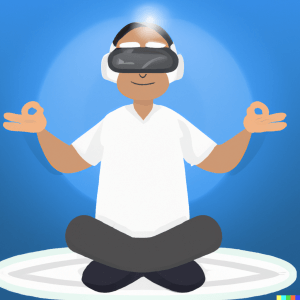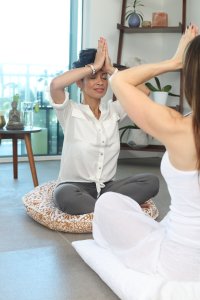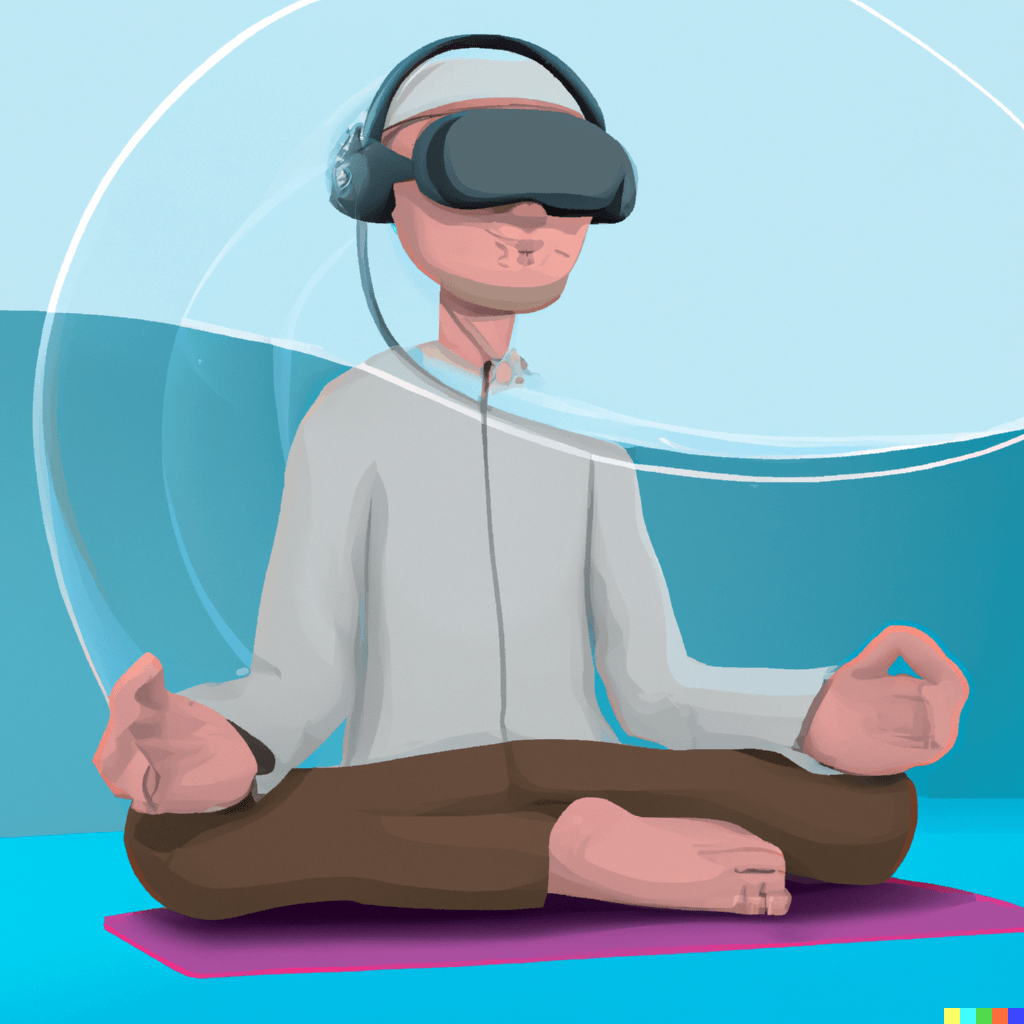Some links on this post may link to affiliate pages that offer compensation to the author of this post.
Virtual Reality Meditation is a form of meditation that uses VR technology to create immersive experiences. It helps people to relax, focus their minds and explore their inner selves. This type of meditation has been gaining popularity over the past few years due to its ability to offer users a more immersive experience than traditional methods. It can be used for relaxation, stress reduction, pain management, and even spiritual development.
With the help of VR technology, users can experience different environments, such as forests or beaches, while in a meditative state. Combining the power of virtual reality with the benefits of meditation, it offers an enhanced experience that can help people achieve greater mental clarity and relaxation. The New York Times recently published an article that explores the benefits of using VR meditation to reduce stress and anxiety. If you have been looking for a way to reduce your stress levels, consider exploring a meditative environment.
Exploring the Different Types of VR Meditation and Their Benefits
 Virtual Reality (VR) meditation can be a great way to reduce stress and anxiety. With the help of immersive technology, users can experience guided meditation in a virtual environment and explore different types of VR meditation. From mindfulness to augmented reality apps for mental health, many different types of VR meditation can provide users with numerous benefits.
Virtual Reality (VR) meditation can be a great way to reduce stress and anxiety. With the help of immersive technology, users can experience guided meditation in a virtual environment and explore different types of VR meditation. From mindfulness to augmented reality apps for mental health, many different types of VR meditation can provide users with numerous benefits.
- VR Guided Meditations:
VR Guided meditations are sessions that help you explore a wide variety of topics with a “guide” that helps you utilize proper meditation techniques as a beginner. Similar to guided meditations on youtube, VR guided meditations offer a deeper level of guidance with sessions on Tripp VR giving unique and exquisite visuals to help you breathe the exact right amount.
- Visualizations
Experiences like Guided Meditation VR are common for providing a virtual environment to explore issues like trauma, stress, and anxiety. By visualizing the mentally draining issues you are experiencing, you can often come to a more cathartic and deeper sense of well-being. One great example is the Free Quest 2 VR experience “Goliath” which is a guided virtual notation and visualization of dealing with and managing schizophrenia.
How Virtual Reality Meditation Can Help Destress & Reduce Anxiety
 Anxiety is a common mental health issue that can have a serious impact on our lives. Fortunately, virtual reality (VR) meditation can help us destress and reduce anxiety. VR meditation combines the power of relaxation techniques with the immersive environment of virtual reality to create an experience that can help us feel more relaxed and in control.
Anxiety is a common mental health issue that can have a serious impact on our lives. Fortunately, virtual reality (VR) meditation can help us destress and reduce anxiety. VR meditation combines the power of relaxation techniques with the immersive environment of virtual reality to create an experience that can help us feel more relaxed and in control.
VR meditation offers several techniques that can be used to reduce anxiety. These include guided meditations, visualizations, and music-based exercises. By using these techniques, we can learn how to manage our thoughts and emotions to reduce stress and anxiety levels. Additionally, VR meditation can also be used as a tool for self-exploration and personal growth.
Scientific studies have explored the difference between VR meditation and found that the average meditation session in VR is about 24% more beneficial than a traditional guided meditation experience source. The reasoning is that Virtual Reality tends to require more attention than traditional meditation and encourages more brain involvement.
By utilizing the immersive environment of virtual reality, we can explore new ways of managing stress and reducing anxiety levels. With the help of VR meditation, we may be able to find better ways to cope with our anxieties and lead healthier lives.
The Cons of Using VR Technology For Meditation
Virtual Reality (VR) meditation can be a powerful tool to help people relax and reduce stress. However, it can be more difficult for those with sensory stimulation issues or who have previously suffered from epilepsy or seizures. VR meditation requires users to put on heavy headsets and be exposed to bright visuals, loud noises, and other intense sensations that can trigger a seizure or an episode of panic for those with these sensitivities. To ensure everyone can reap the benefits of this powerful technology, developers must ensure that their VR meditation experiences are safe and accessible for those with special needs.
The good news is most VR applications have taken these steps for a long time so most VR experiences will be just fine for any meditation practice. As usual, you should always consult medical professionals if you have health concerns and not just rely on internet articles if you are concerned about VR.
What are The Best Tools & Resources to Get Started with VR Mediation?
Virtual Reality (VR) meditation is an increasingly popular way to relax and escape the stresses of everyday life. With the right tools and resources, anyone can get started with VR meditation. Depending on what kind of headset you have, you may want to pick up a couple of accessories for a more comfortable experience. Our personal favorite VR meditation device is the Quest 2 but most of these accessories can be used with other VR devices as well.
- a good VR cover
- a different VR head strap
- a comfy meditation cushion
A great VR cover or cushion is what sits between your face and the VR headset. If you have used the regular quest 2 VR cushion, you may have noticed it can get really hot and sweaty which is not great if you are prone to acne or just want to take better care of your face.
The Quest 2 has a pretty flimsy and hard-to-adjust VR headset which can make it a bit clunky to get it to sit just right on your face. So we use a VR head strap which really helps to improve the VR meditation experience.
Last but not least, a comfy meditation cushion will help you stay comfortable in your meditation position for longer periods of time so we recommend it if you are a novice or a meditation grand master.
Thanks for reading! As a meditation practitioner and a VR enthusiast, I love writing articles about VR and meditation. Please consider subscribing for more articles like this directly in your inbox.
– Preston
Thanks for reading to the end of this post. If you find the information I provide to be helpful, please consider subscribing.
Disclaimer: None of the information presented on this site constitutes legal, business, tax, or medical advice. In each scenario, it’s recommended to first chat with a medical, legal, business, or tax professional before making any decisions.


